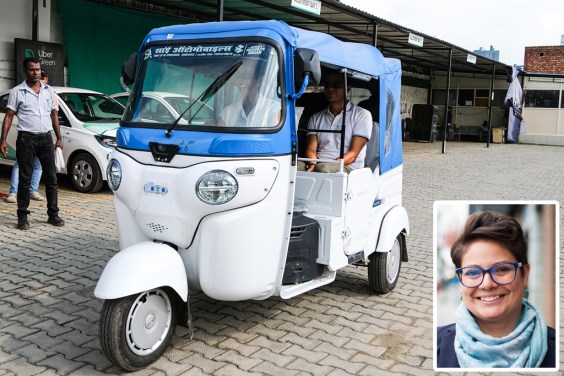The past couple of years have been bittersweet for American transit riders. While the Obama administration's TIGER grant program and livability initiatives have spurred investments in new streetcar and bus projects, service cuts and fare hikes have been the order of the day in cities large and small, as transit agencies cope with shrinking revenues brought on by the recession. It can be frustrating for transit users to witness the construction of expensive new facilities while they’re paying more for less service.
At Rail~volution, transit agencies gave their side of the story, letting attendees get inside their heads as they engage in the sometimes-inscrutable tug-of-war between spending on capital projects (maintenance and expansion) and operations (service).
Some transit officials think that in order to keep service from slipping any further or fares from going any higher, they need to maintain their customer base – and that the prospect of new facilities might keep them there.
But others see the reverse as being true. “If people like the service they have,” said former Massachusetts Transportation Secretary James Aloisi, Jr., “even if it’s inferior to what you know it could be, they’ll support efforts to expand it.” So maintaining a high level of service can also build political support for capital projects.
The Federal Firewall That Shuts Out Transit Operations
Federal transit funding is directed almost exclusively toward capital expenses (including maintenance) and is rarely available for operating costs. In order to take advantage of federal funds, transit agencies have to come up with new capital projects. They can’t just ask for help to hire bus drivers.
And judging by the comments at Rail~volution, that's just the way the transit agencies like it.
Transit workers and advocates around the country have organized to gain access to federal funds for operations, and they've been joined by some urban transit agencies. But Aloisi of Massachusetts spoke for many of them when he said, “I’m not sure I want the federal government too deep into my operations. You just don’t know what would come with that.”
Neil McFarlane, General Manager of TriMet, and Michael Allegra of the Utah Transit Authority agreed that they're "not convinced we should be relying on federal investments for operations." Their priority was to increase federal participation on the capital side and “leave it to us to maintain safe operations.” Some level of funding for maintaining their systems in a state of good repair, they allowed, was acceptable to them.
Why the fear of federal assistance for operations? They seemed to worry that it could come with micromanagement of day-to-day operations. Still, their unwillingness to fight for flexibility in federal funding is frustrating to riders and advocates who are tired of service cuts.
Avoiding Service Cuts During a Budget Crunch
Meanwhile, Michael Allegra of the UTA says capital expenditures don’t have to eat into operating budgets, even in hard times. The UTA managed to maintain its promised capital expansion projects with less than a five percent reduction in service by spreading cuts out over all parts of the agency. They opened their books to their contractors to have a frank conversation about how to reduce costs on all sides. They’re holding off on expanding service, and even sold off some vehicles they had already bought for future service improvements. Still, ridership is up.
Portland, on the other hand, has been forced to cut service when the state’s 10.6 percent unemployment rate threatened revenues (Oregon doesn't have a sales tax, so TriMet is funded by payroll taxes.) “Service reductions put the spotlight on us,” said TriMet's McFarlane. “We found ourselves answering difficult questions, like, ‘How can you build another rail line when you’re cutting service and raising fares?’”
McFarlane vigorously disputed the charge that TriMet allowed light rail to grow at the expense of bus service, which is seen as serving more traditionally underserved people.
He said 76 perent of TriMet’s riders use both modes – bus and rail – and so they see the efficiency of the whole system, not just one mode or another.






